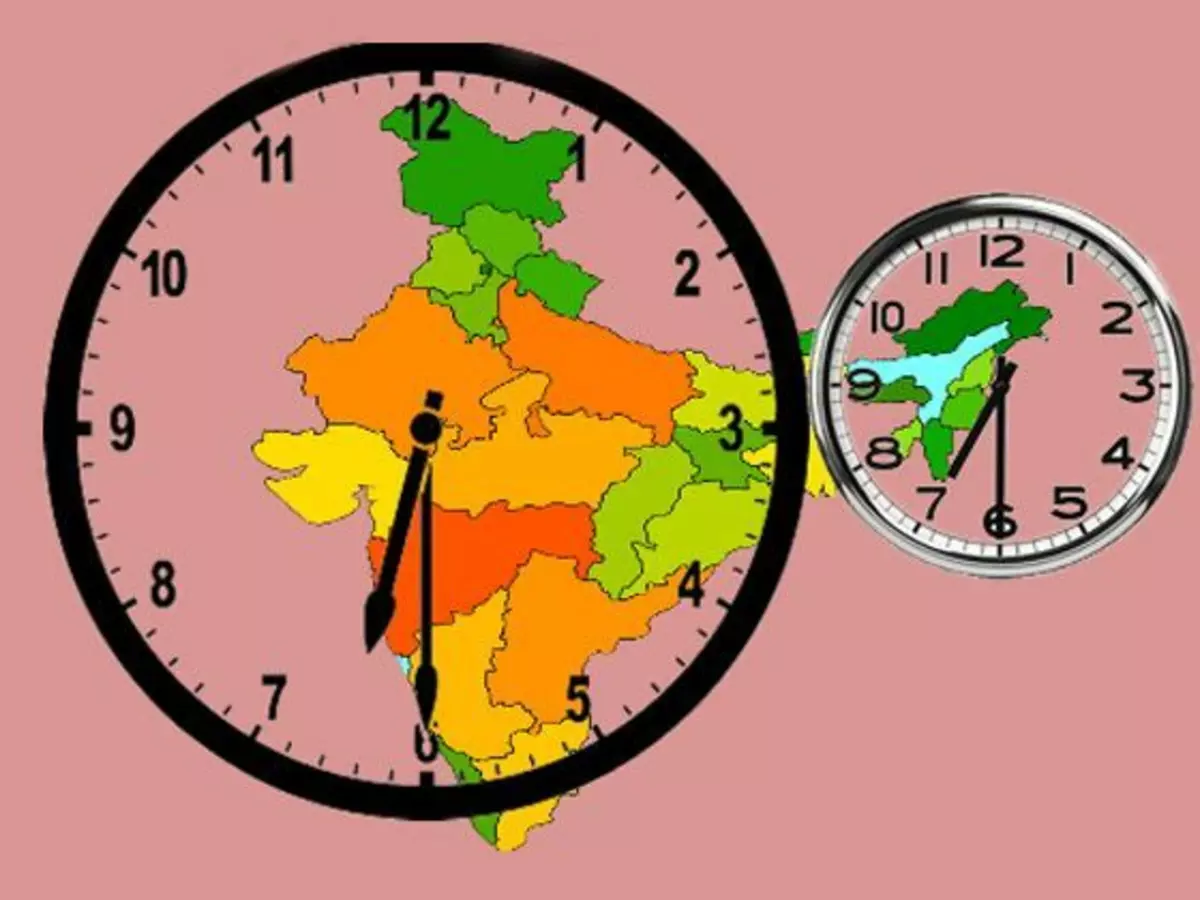Study Says, Two Time-Zones For India Are Practical And Implementable, Why Don't We Try It?
A study by scientists at CSIR&rsquos National Physical Laboratory showed two different time zones for India is practical and easily implementable. There have been long-standing demands for a separate time-zone for the north-eastern states of India. The Guwahati High Court had dismissed a Public Interest Litigation on March 6 2017 seeking a directive to the Centre for a different time zone.

Contrary to the stand taken by the Union Ministry of Science & Technology, a study by scientists at CSIR¡¯s National Physical Laboratory showed, two different time zones for India is practical and easily implementable. There have been long-standing demands for a separate time-zone for the north-eastern states of India.
The study published in the latest edition of Current Science revealed, ¡°Implementation of IST-II in these states would not only enhance the efficiency of populace as their daily working hours get synchronous to the circadian (biological) clocks, but would also save significant amount of energy.¡±
The Guwahati High Court had dismissed a Public Interest Litigation on March 6, 2017 seeking a directive to the Centre for a different time zone on the basis of a High Level Committee set up by the Ministry of Science & Technology. Though the Committee held that the ¡°eastern states in the country do face certain disadvantages by following standard time due to early sunrise/sunset in the region,¡± it instead recommended advancing of working timings by one hour in the Eastern states.

The proposed scientific recommendations of two time zones - IST-I
(UTC + 5.30 h) and IST-II (UTC + 6.30 h) - are based on: (i) importance of sunrise and sunset timings on the biological activities of living beings; (ii) simple analyses of synchronizing the sunrise and sunset timings across the country to the usual office hours of 9.00 a.m. to 5.30 p.m. (iii) minimization of the spatial extension at the proposed border of time demarcation so as to avoid any kind of railway accidents; (iv) if the proposed time-zones would be beneficial for the electricity saving, and (v) the technical implementation mechanisms of the proposed two new time-zones in the country.
¡°The existing IST is said to be badly affecting their lives as the Sun rises and sets much earlier than the official working hours. Early sunrise leads to loss of many daylight hours by the time offices or educational institutions open. In winter, this problem gets even more severe as the Sun sets much early and therefore, more consumption of electricity is required to keep life active,¡± the study said.
¡°As the time-keepers of the nation, we wanted to show that scientifically it is validated and possible. It¡¯s for the government to decide on it,¡± said Dr D.K. Aswal, the lead author of the study and Director of National Physical Laboratory, New Delhi told the Indian Science Journal.
The main advantage of a different time zone for the north-eastern states is to make the biological clock or circadian rhythm synchronous to the solar day, which would enhance the efficiency of people working in the region, and hence, the overall productivity.
¡°After the sunset, fatigue starts creeping in due to increased blood pressure and body temperature. Therefore, in order to make people work efficiently and be productive, it is necessary that the working hours should be synchronous to the biological clock,¡± noted the study.
In addition, due to better utilization of daylight, a good amount of electricity can also be saved in this region with the introduction of IST-II.

Representational Image
To estimate the possible energy savings, The researchers had adopted a direct method that uses state-wise population, per capita electricity consumption and the available daylight hours extracted from the Sun graphs. The analysis is made based on authentic data available for the year 2011.
¡°We have analysed the Sun graphs corresponding to the summer solstice, vernal equinox, winter solstice and autumn equinox for estimation of hours of energy saving by two time zones implementation.¡± On the basis of average savings per person of electricity daily, the estimated annual energy saving comes out to be 2 ¡Á 107 kWh, which is significant considering the fact that these states are already short on electric power, said the study.
The researchers have suggested the second time zone for India could pass through the border of West Bengal and Assam at a longitude of 80o 52¡¯ E. The state falling under IST-II would be Assam, Meghalaya, Nagaland, Arunachal Pradesh, Manipur, Mizoram, Tripura and Andaman & Nicobar Islands
¡°Technically, the two time zones in the country can be easily implemented by CSIR-NPL as it has the desired mandate and the expertise,¡± the authors stated.
The only re-arrangement required, while implementing two time zones, is synchronising railway traffic. As the railway signals have not yet been fully automated in the country, the border between the two time zones should have a very narrow spatial-width with a minimum number of train stations so that the train timings while crossing the border can be managed manually without any untoward incidents. Fortunately, for India, the border between West Bengal and Assam provides this opportunity, as only two railway stations namely New Cooch Behar and Alipurduar need to be managed for time adjustment, said the study.
This article was originally published by Indian Science Journal (ISJ), a niche digital publication devoted exclusively on news based on research in Science, Technology, Healthcare and Agriculture.
